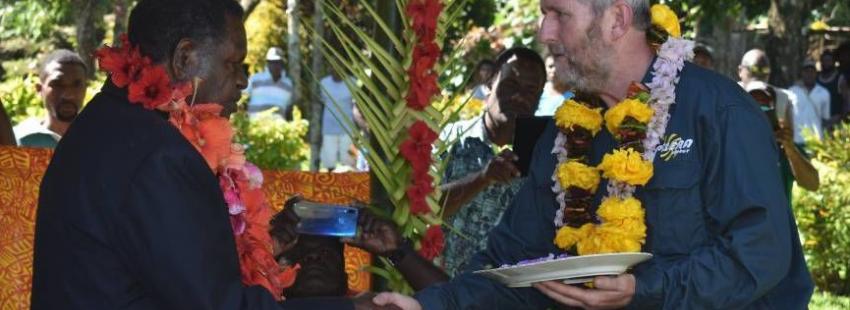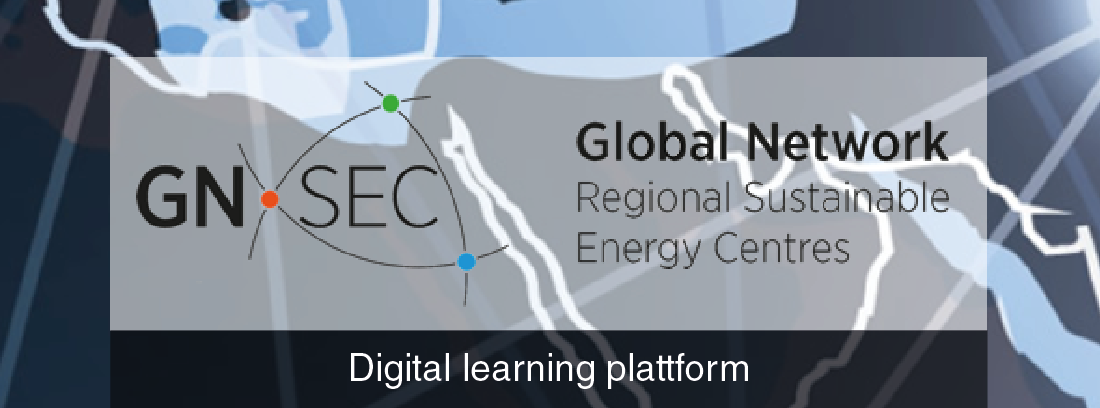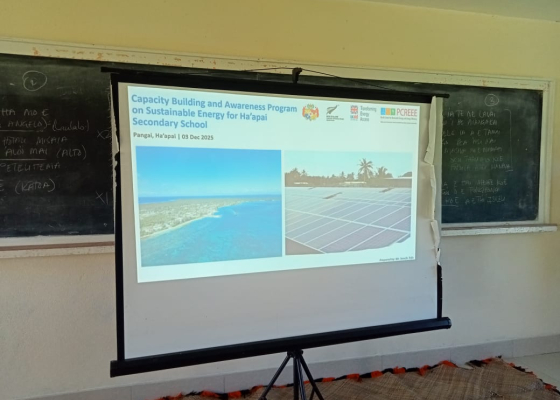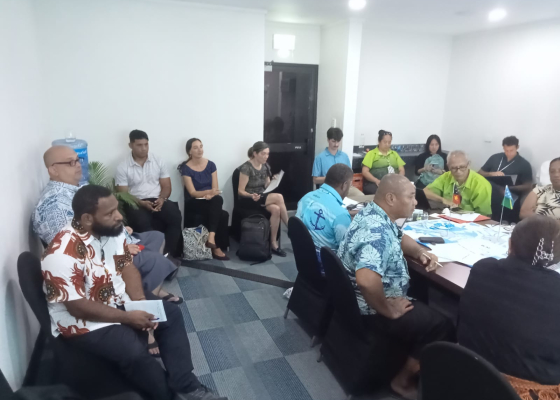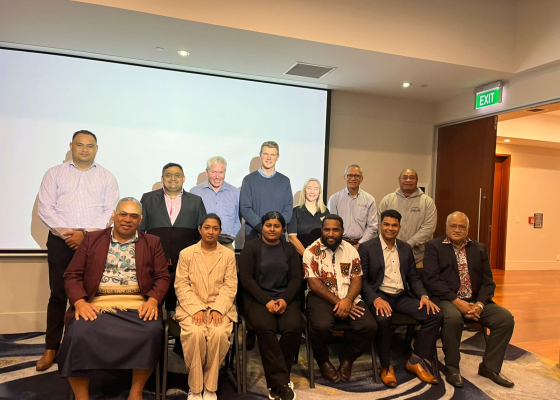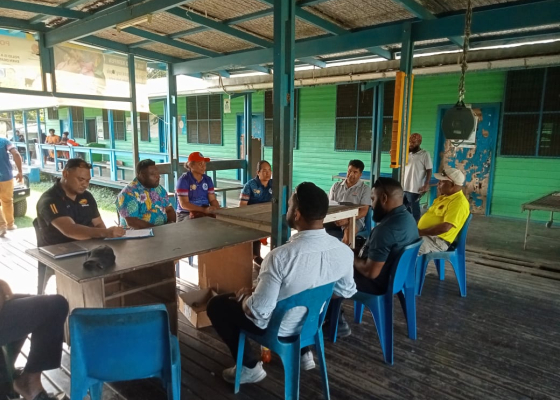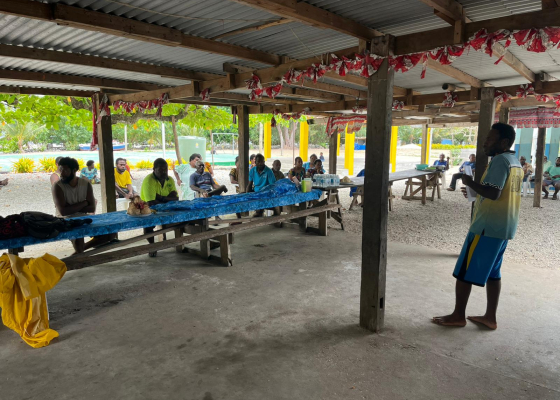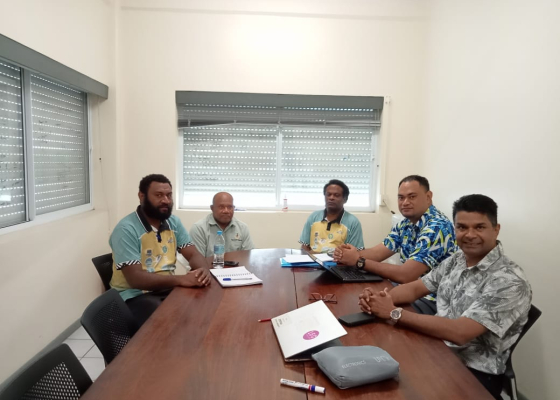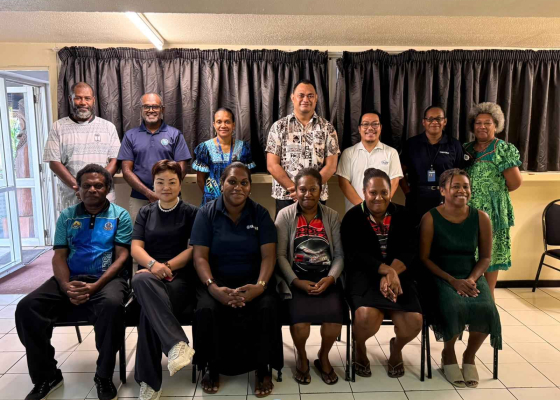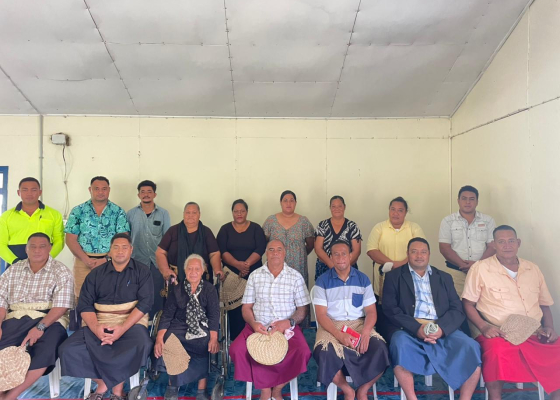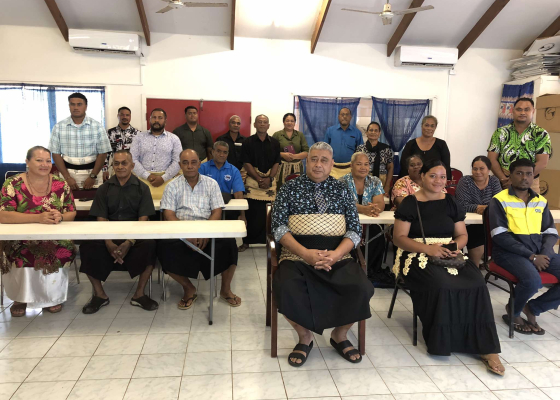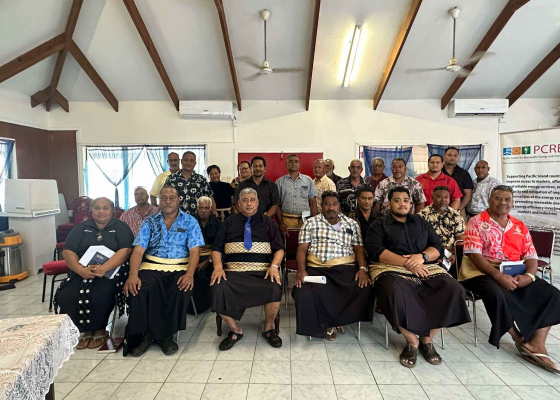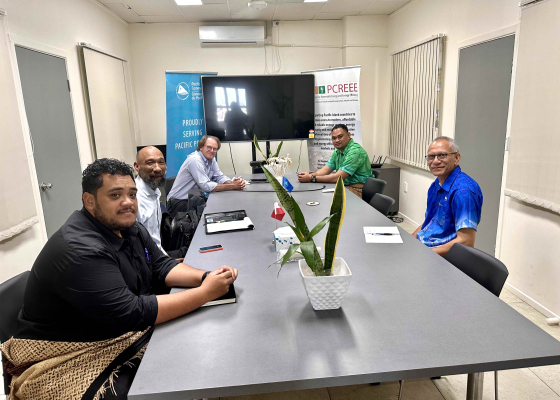Official Opening of Talise Hydro Stage 2
July 29, 2019. Peter Lynch, his wife Salena and son Hugo were exuberantly feted in Vanuatu at celebrations that officially flicked the switch on reliable power to four remote villages.
Since 2011, their Dorrigo-based company Pelena Energy has been working with local communities on Maewo Island to install hydroelectricity.
Peter has visited on many occasions over the years, but July 13 was the first time “family blong Mr Peter” came too.
Their journey into the village of Talise was accompanied by a piece of theatre paying homage to the micro hydro system that Pelena designed.
“We were greeted by five men dressed in kastom clothing, singing a chanting song about travelling on a ship and arriving at the next village,” Peter said.
“As we walked along, people would come out of the bush with a different form of lighting.
“The first was a burning bunch of dry palm fronds.”
“The group would say, ‘You don’t need that type of light because we have special people aboard and where we are going there is hydro. Throw it away and join us on our journey’.
“The chant would start again. Next time the offering was a battery powered flashlight.
“Then a kerosene lamp. A small solar light. All thrown away.”
What has replaced them is a 75 kilowatt run-of-river micro hydro system installed in the Talise River Valley (Stage 1, completed 2014), six kilometres of high voltage cable buried under jungle, rivers and rocky shoreline, plus five step-down transformers to take the voltage from 11,000 volts to 240 volts (Stage 2, completed 2018).
The connection of the two schools, a clinic and 10 streetlights now running off the 240 volts was a $60,000 bonus from Pelena Energy, as Stage 3 of the project (connection to village premises) is not yet funded.
But even this small beginning is a big deal.
Head nurse at Nasawa Clinic, Mary Buleling, was in tears as she described the difference that 24-hour electricity makes when you are trying to deliver babies and deal with emergencies in the middle of the night.
She talked about a mother who had given birth to twins being poorly sutured by the light of hurricane lamps then having to endure the stitches being pulled out and redone the next morning because she’d developed a haematoma.
“Today hem one big fella achievement,” Mary declared.
A remarkable feature of that achievement is the community-engagement model that Pelena Energy employed.
Instead of importing bulldozers, cranes, concrete plants and a workforce from overseas — which would have been a hugely expensive logistical nightmare given the geography and lack of infrastructure — they used people power.
Men, women and children banded together to unload equipment from boats, dig long trenches by hand, and haul cable through the jungle.
Local people have also been trained as the technicians who maintain and manage the system.
“In Talise, one of the technicians cannot read or write but is a critical member of the maintenance team,” Peter said.
Stage 1, setting up the generation system, presented plenty of curve balls: “Horrendous weather events of cyclones, floods, and winds ... it rained 14 out of every 15 days of the project’s construction phase,” Peter said.
Stage 2 was no easier.
An initial attempt to install the high-voltage transmission line in March 2018 was beset by three cyclones, a volcanic eruption and 20 days of rain.
The ash, toxic gas and rocky debris that spewed from the volcano on nearby Ambae Island rendered it uninhabitable by July, and thousands of people had to be evacuated.
Maewo Island’s population of about 3000 doubled, but fortunately, the second stage of the project had been completed by then, so the schools providing temporary housing and the clinic that had to deal with more patients at least had reliable electricity.
The Minister of Planning and Climate Change Adaptation, Ham Lini, was among the dignitaries present, and so was Peter’s long-term friend Nixon Silas, whose involvement with small hydro projects in the Solomon Islands inspired and bolstered Pelena Energy’s work in Vanuatu.
In his speech at the opening ceremony, Peter urged the Vanuatu government to think of the Talise hydro project as “the model for rural electrification across 80 per cent of your country”.
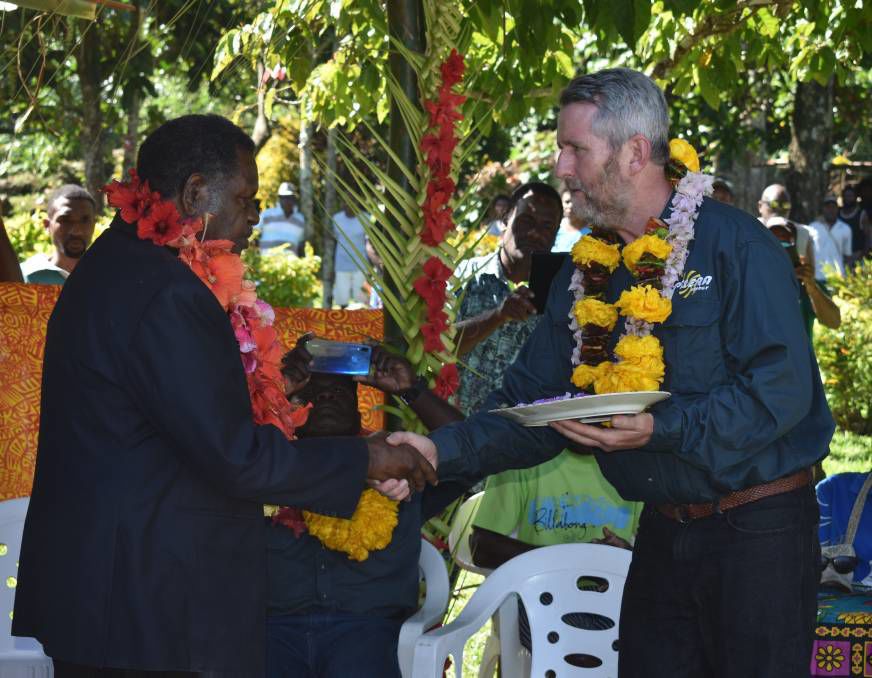
Peter Lynch (right) officially handling the keys for Talise Hydro Stage 2 to Vanuatu’s Minister of Planning and Climate Change Adaptation, Ham Lini.
For more information please click here.
Source: Vanuatu Daily Post
Upcoming Events
-
01/19/2026 to 01/23/2026
-
03/02/2026 to 03/03/2026

